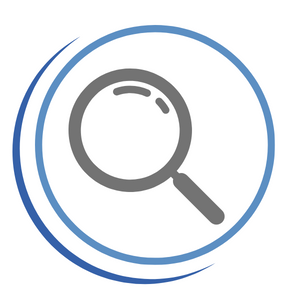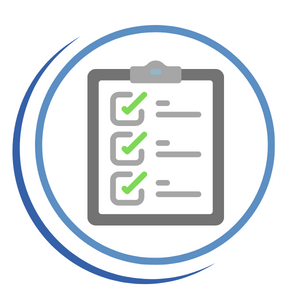Headaches are one of the most common disorders in people of all ages and Vitalis Physiotherapy offers a personalised headache treatment in Brisbane which involves:
Headaches Treatment
Headaches are a common disorder, prevalent in people between the ages of 18 and 65. They are often caused by a person’s lifestyle, exposure to everyday stress, poor posture, and even as a result of underlying neck problems.
Determining the root causes of a headache can be challenging but it is crucial for the patient’s recovery. To effectively treat the headache, we need to address the source of the problem which will, as a result, help minimise or completely eliminate the discomfort caused by this disorder.
What Causes Headaches?
Headaches are a common disorder, prevalent in people between the ages of 18 and 65. They are often caused by a person’s lifestyle, exposure to everyday stress, poor posture, and even as a result of underlying neck problems.
Determining the root causes of a headache can be challenging but it is crucial for the patient’s recovery. To effectively treat the headache, we need to address the source of the problem which will, as a result, help minimise or completely eliminate the discomfort caused by this disorder.
What Are The Types Of Headaches?
»Tension Headache
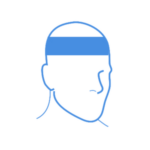
Tension headaches are characterised by a dull, aching sensation and can affect anyone. They are often triggered by stress.
Risk factors causing tension headaches:
stress, sleep apnea, lack of sleep, clenching the jaw, hunger, depression, anxiety, arthritis, poor posture, bending or straining the neck
- Located on one or both sides of the head or neck
- Lasts 2 hours to days
- Mild to moderate intensity
»Migraines
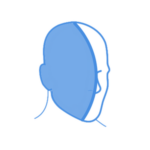
Migraines usually hurt worse on one side of the head. You may experience light sensitivity, aura, or bright lines or dots in your field of vision. Migraine headaches significantly limit your ability to carry out your daily routine.
Risk factors causing migraines:
having a family history of migraines, being female, mood disorders (depression, anxiety, or bipolar disorders), sleep disorders
- Located on one or both sides of the head
- Lasts 4-72 hours
- Mild, moderate, or severe intensity
»Cervicogenic Headache
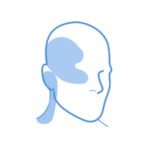
Cervicogenic headache appears when pain is referred from a particular source in the neck up to the back of the head. It is usually one-sided. Pain can also be felt in the areas such as: forehead, temple and around the eyes and/or ears.
Risk factors:
neck trauma, whiplash, strain, chronic spasm of the scalp, neck, or shoulder muscles
- Located on the neck and the head
- Lasts 1 hour to 1 week
- Mild to moderate intensity
»Cluster Headaches
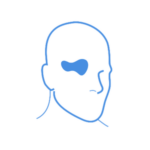
Cluster headaches are characterised by severe burning and piercing pain, like you’re being stabbed in the eye. During a cluster, most people experience 1-4 headaches a day, one after the other.
Risk factors causing cluster headaches:
being man, having a family history of cluster headaches, being between 20 and 50 years old, being a smoker (quitting smoking in most cases has no effect on the headaches), drinking alcohol
- Located on one side extending from the eye
- Last 30-90 minutes
- Severe intensity
»Allergy / Sinus Headaches
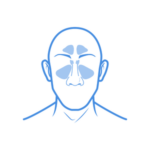
These headaches occur as a result of an allergic reaction. The pain is caused by the build up of pressure.
Risk factors causing allergy / sinus headaches:
allergies, a week immune system, nasal growths, sinusitis, weather allergic
- Located on the face, foreheads and between the eyes
- Lasts days, if untreated
- Mild to severe intensity
»Caffeine Headache
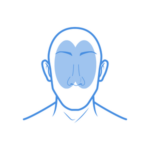
Caffeine affects the blood flow to your brain, and as a result, consuming too much can cause a headache. You can also get a caffeine headache from quitting caffeine as it changes your brain chemistry, and withdrawal from it can trigger a headache.
Risk factors causing caffeine headaches:
too much caffeine, quitting caffeine
- Starting behind the eyes, it can move up to the front of the head
- Lasts 2-9 days
- Mild intensity
»Hormonal / Menstrual Headache

These headaches are caused by fluctuation in hormones.
Risk factors affects oestrogen levels, such as:
birth control pills, being pregnant and menstruation
- Located on one side of the head
- Lasts hours to days
- Mild to severe intensity
»Hemicrania Continua

A moderate headache on one side of the head that is continuous for at least three months. This type of headache may also be accompanied by: tearing or eye redness; nasal congestion or runny nose; eyelid drooping; forehead sweating; miosis; restlessness or agitation.
Risk factors:
There are no known causes for hemicrania continua.
- Located on one side of the head
- Lasts at least three months continuously
- Mild intensity
»Hypertension Headache

This type of headache is caused by high blood pressure. This kind of headache signals an emergency. It occurs when your blood pressure becomes dangerously high.
Risk factors:
high blood pressure, Pheochromocytoma, pre-eclampsia and eclampsia, the use of or withdrawal from drugs
- Located on both sides of the head
- Lasts less than one hour
- Mild intensity; worse with any activity
»Rebound Headache

This type of headache is caused by medication overuse. You may be more likely to develop a rebound headache if you frequently use over-the-counter pain relievers.
Risk factors:
frequent or excessive use of pain-relieving
- Located on front of the head or the back of your neck
- Lasts 6-24 hours
- Mild to severe intensity
»Post-Traumatic Headache
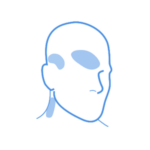
This type of headache develops after any type of head injury usually after 7 days. They can become chronic.
Risk factors:
head trauma
- Located on on head pending where the injury was
- Lasts 6-12 months after injury
- Mild to moderate intensity
»Exertion Headache

This type of headache develops during or after physical activity. May cause neck pain.
Risk factors:
coughing or sneezing, strenuous exercise, running or doing aerobics, having sexual intercourse, weightlifting, straining to go to the bathroom
- Located on one or both sides of the head
- Lasts 5 minutes to 48 hours
- Mild to moderate intensity
»Thunderclap Headache
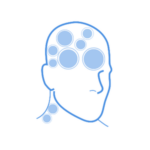
This type of headache is an extremely severe headache that comes on rapidly, reaching peak intensity in under a minute. Some of the symptoms may include: numbness, weakness, speech problems, nausea / or vomiting, confusion, vision changes.
Risk factors:
There is no obvious cause for this type of headache. Some of the risk factors may be:
» primary headache: cough, heavy exercise, exertion or sexual activity
» secondary headache (health conditions):
- bleeding in the area around brain (subarachnoid hemorrhage – the most common issue);
- sudden constriction of the vessels that supply blood to brain (reversible cerebral vasoconstriction syndrome);
- bulging / bleeding blood vessel (brain aneurysm)
- head injury causing a brain bleed;
- blocked / bleeding blood vessel (stroke),
- sudden, severe increase in blood pressure;
- late-term pregnancy complications i.e. rise in blood pressure (eclampsia) and bleeding in pituitary gland during pregnancy or after delivery;
- carcinoid tumors and pheochromocytoma;
- a blockage in blood flow / bleeding in pituitary gland (pituitary apoplexy)
- Located on the back of the head
- Lasts 60 seconds to an hour
- Severe intensity
»Ice Pick Headache
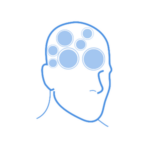
This type of headache is characterised by short, intense stabbing pains. Ice pick headaches could feel like a single stab or multiple stabs in succession.
Risk factors:
There is no obvious cause for this type of headache. Some of the risk factors may be:
life-style factors (primary conditions – i.e. lack of sleep or changes in sleep pattern, cold, heat, fatigue, alcohol consumption), secondary conditions: stroke, miltiple sclerosis, meningioma, herpes zoster meningoencephalitis (complication of shingles)
- Located all around the head
- Lasts a few seconds, multiple times a day
- Mild to moderate in severity
What Is The Best Headache Treatment?
We at Vitalis Physiotherapy specialise in the Watson Headache Approach which helps treat neck and jaw related headaches which are the most common. It is a gentle approach that does not involve any medication, radiation or injections. It is the best treatment for cervicogenic headaches because it allows us to use a series of gentle technique to help reduce pain or completely relieve you from it. Over the years, we have seen significant lifestyle and health improvements in all patients who came to us for this type of a cervicogenic headache treatment.
Our treatment also includes:
- Posture improvement
- Desk setup advise
- Advice on work and leisure habits
- Personalised exercise and relaxation program
- Watson headache approach
- TECAR Therapy
- Shockwave Therapy
How To Book An Appointment?
If you are suffering from headaches, or you’re just looking for a ‘physio near me’, all you need to do is just give us a call on 0410 559 856 and request an initial appointment. Please let our friendly reception staff know the background and severity of your condition.
You can visit our FAQs for more information about appointments at Vitalis Physiotherapy.


